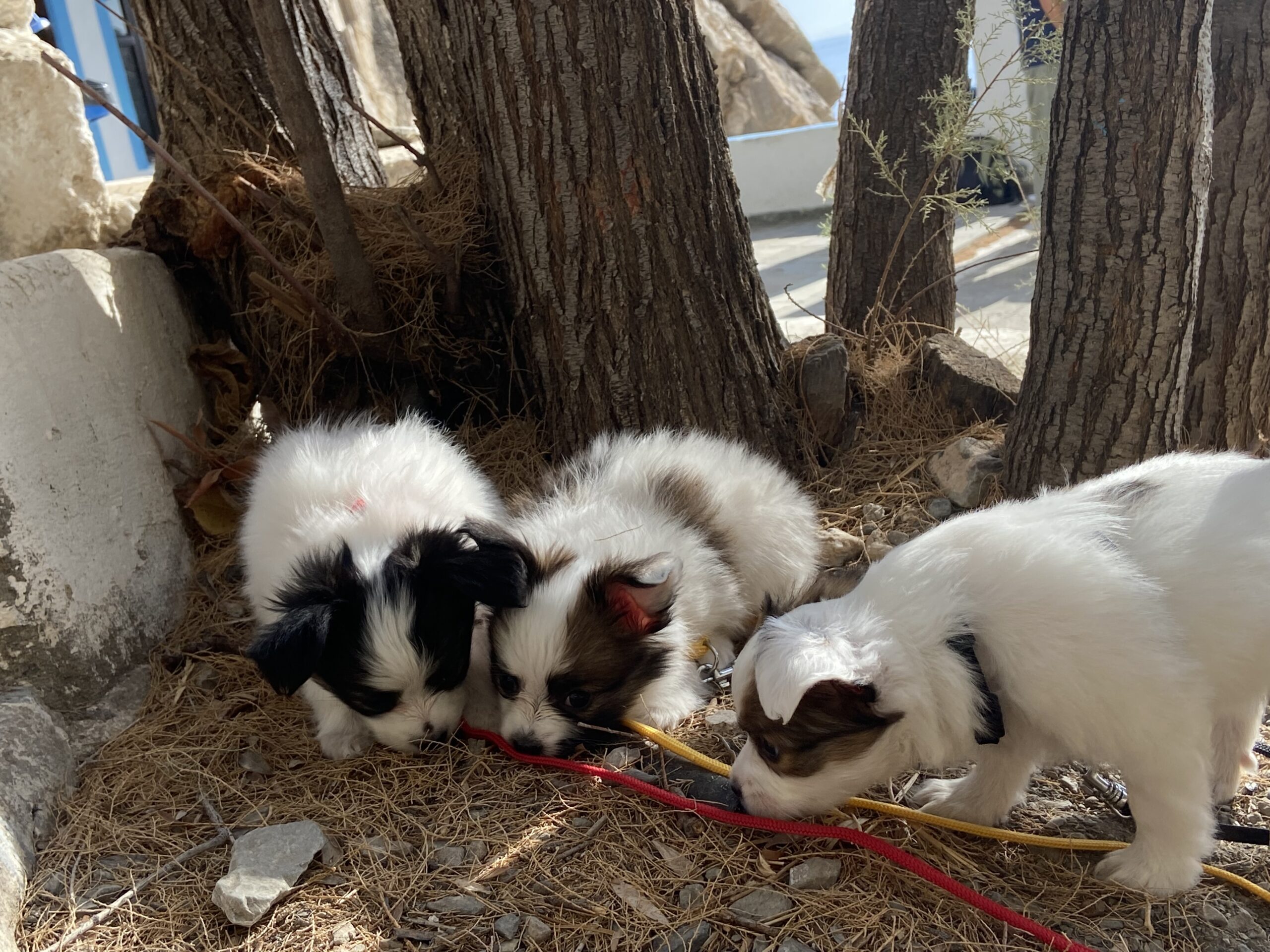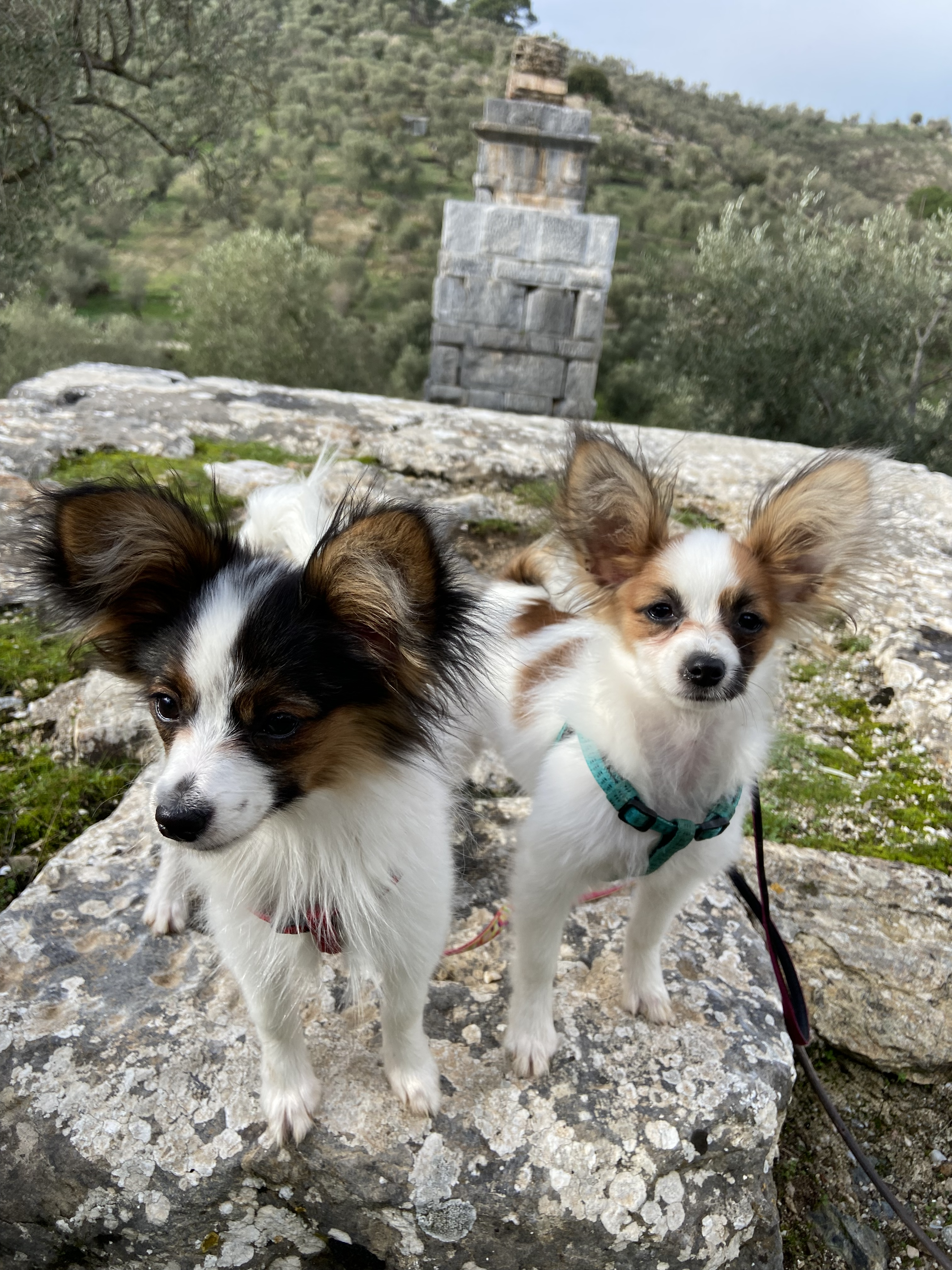The Papillon ( French for ‘butterfly’), also called the Continental Toy Spaniel, is a breed of dog, of the spaniel type. One of the oldest of the toy spaniels, it derives its name from its characteristic butterfly-like look of the long and fringed hair on the ears. Papillons can also have dropped ears and when they do, this is called a Phalène (French for ‘moth’). The small head is slightly rounded between the ears with a well-defined stop. The muzzle is somewhat short and thin, tapering to the nose. The dark, medium-sized, round eyes have thin, black rims, often extending at the junction of the eyelids towards the ears. The large ears can either be erect or dropped with rounded tips. The teeth meet in a scissors bite. The long tail is set high carried over the body, and covered with long, silky fine hair. Papillons have only single coat (no undercoat) with an extra frill of hair on the chest, ears, back of the legs, and tail. Coat color is white with patches of any color. A mask of a color other than white covers both ears and eyes from back to front.
Papillons are very intelligent and self-assured dogs that have a very easy time learning new tricks. These dogs can be sociable with children and strangers, but are generally reserved around new people. They can also be socialized to get along well with other pets. If not properly socialized, Papillons can be distrustful and exhibit aggressive tendencies toward other dogs and people. Papillons may also be very playful and affectionate. Widely known as great companion dogs, they have the spirit and energy to keep up with active families, but can also be calm enough to be happy with sleeping in the arms of an equally affectionate owner. Due to their high intelligence level, they require frequent stimulation and are best kept satisfied by following their owners everywhere. Papillons are known as excellent watchdogs, as they will alert their owner to changes in their environment. They can withstand heat, but are more sensitive to cold temperatures because of their single-coated fur, and should not be left outside unattended in cold weather.
The history of the Papillon is traced through works of art. The earliest toy spaniels resembling the papillon are found in Italy. Tiziano Vicelli painted these small dogs in many famous paintings beginning around 1500, including the Venus of Urbino (1542). Other well-known artists who included them in paintings are Watteau, Gonzales Coques, Fragonard, Paolo Veronese, and Mignard. In a painting after Largillierre in the Wallace Collection in London, a Papillon is clearly shown in a family portrait of Louis XIV. Papillons are also in paintings of royal families around Europe and paintings of merchant-class families. The breed was popular in England, France, and Belgium, which are considered countries of origin by the FCI.
The “Titian spaniels” and those portrayed by later artists through Mignard and his contemporaries had the drooping ears characteristic of today’s Phalène; the erect-eared appearance did not become fashionable until the end of the 19th century. The Titian spaniels were also exclusively red-and-white in coloration, in contrast to the many recognized colorations of today’s Papillon.
The Papillon’s history and long association with royalty have led to many stories about the breed. Marie Antoinette is said to have walked to the guillotine clutching her small dog under her arm, likely an apocryphal tale. However, tradition has it that Marie Antoinette’s dog was a small spaniel that had been brought to the French court from Spain on the back of pack mules. According to the story, her pup was spared and cared for in a building in Paris still called the Papillon House. Marie Antoinette’s dog was said to have descended from a very old drop-eared breed known as the Epagneul Nain, or Continental Dwarf/Toy Spaniel that appeared in church frescos and paintings as early as the 13th century.
The Papillon is still officially referred to as the Epagneul Nain (ENC) in non-English-speaking countries. The Papillon has also been referred to as the Squirrel Spaniel, most likely referring to an earlier standard in which the tail set is described as “curling over the back as a squirrel’s”. One version of the history of the two varieties of ear shape in the ENC (“papillon” to denote the erect ear and “phalène” to denote the dropped ear) is that toward the end of the 19th century, breed fanciers bred a version of the spaniel whose ears stood up. This dog was said to have been nicknamed Papillon based on the impressively large, erect ears that resembled the wings of a butterfly. The drop-eared variety of the breed came to be called the Phalène (which means “night moth”). Both types are still bred today and can appear in the same litter, however, the papillon variety is much more common. Recently, the Phalène has undergone a resurgence in popularity and both varieties are easily found today. All Papillons

